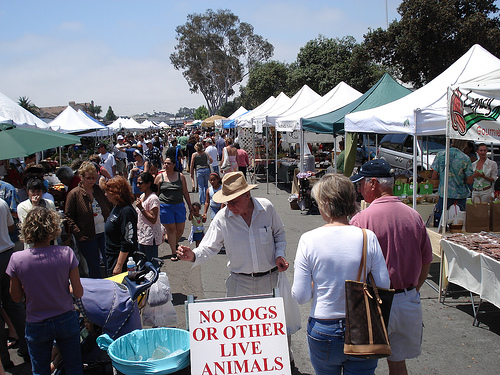We’ve been working on Going Green over here through our remodeling, household purchases and especially in the way we cook and eat. One of the best ways to do that is through our local Farmers Market! Gotta love wholesome, locally grown, farm-to-table food (especially now that Liv joins us at the dinner table! More on that soon).
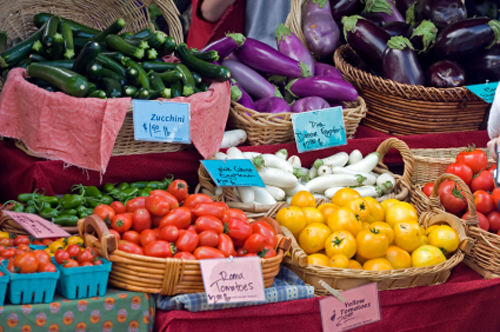
While we are registered with a local CSA (Community Supported Agriculture) group and pick up a box chock full of delicious goodies once every other week, sometimes we like to supplement with the local Farmers Market, and since San Diego supports over 50 local Farmers Markets – there’s a plethora to choose from.
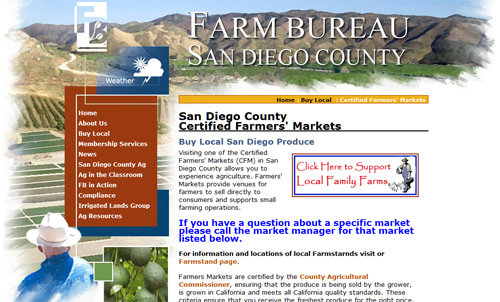
But… can buying local be as cost-efficient as buying from the grocery store? I headed out to our Sunday morning Hillcrest Farmers Market to check it out.
My mission: Spend $25 for a weeks worth of organic fruits and veggies.
My finds: 1 canteloupe, 1 acorn squash, 3 large bell peppers, 2 bunches baby carrots, 1 head of garlic, 1 bag each (about 8 total) of tomatoes, peaches & apricots, and for good measure – two $2.50 bouquets of flowers, 1 container fresh mozzarella cheese and one loaf of locally baked bread.
The results: My locavore basket beat out the local supermarket by about 50% (I’m sure with coupons and specials you could get awfully close though) and when I added up the finds it was roughly Farmers Market: $25, Supermarket: $38. Score one for the home team.
Best tips: I prefer to hit up the Farmers Market about an hour before closing. The selection is usually just as great but the vendors are eager to part with their wares (to not truck anything home) and offer great sales. Bartering is always to be expected around this time, too! Pick out a range of ‘ripeness’, such as melons a week or so out, peaches that are still hard and squash that will last for a while in your fridge. You don’t want to be stuck with an entire basket that’s bound to ripen up (or is already ripe) too soon.

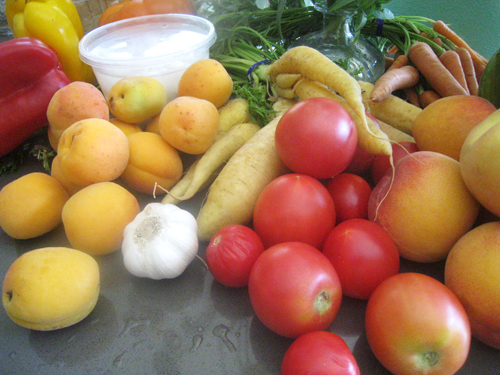
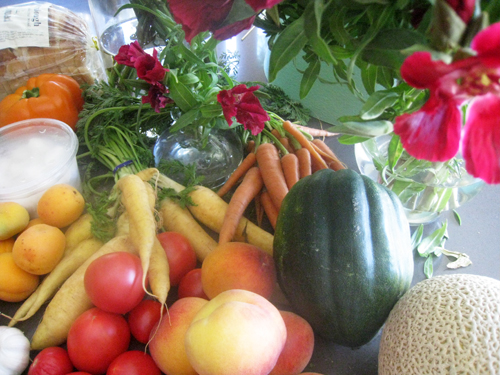
So delicious! I usually roast my squash and carrots to draw out the natural sugars (450 deg tossed in olive oil, salt and pepper) – also great for any root veggie, BBQ stone fruits (such as my peaches and nectarines – add a bit of honey and yogurt) and saute the bell peppers with fingerling potatoes. If we do have veggies and fruit that we won’t eat quickly enough, into the juicer they go.
By eating locally, we’re supporting our ranchers and farmers, keep our hard earned dollars in the local economy, eating fresher produce (no shipping and shelf life here), reducing energy consumption (transportation and storage) while protecting our environment, and getting the opportunity to cook in season with ingredients that might not often be found in the store (yay for the funny looking vegetable you’ve never tried before! or, chocolate mint, anyone?). Plus, most of the locally produced food grown by family farmers is organic and chemical free.
Yum.

